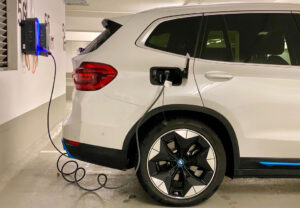INSURING electric vehicles (EVs) could cost twice as much as the premiums for traditional vehicles that use gas or diesel, the Philippine Insurance and Reinsurance Association (PIRA) said.
“Maybe double. Maybe that would be the top end. But definitely higher [than regular vehicles]. It depends on the company. It’s hard to say because I don’t know what their commission rates are, but it’s significantly more expensive,” PIRA Motor Committee Member Alexander Reyes told reporters on Tuesday.
PIRA Executive Director Michael L. Rellosa said they hope to have guide premium rates for EVs by midyear, adding that the group has collated data from other countries to help determine these benchmarks.
“We have asked assistance from countries that have already covered electric vehicles like Malaysia and Thailand. But of course, we can’t rely on their statistics because their data is different from ours. So, we’re trying to marry the two and come up with guide rates going forward,” he said.
EVs will likely need higher premiums as these are considered riskier, Mr. Rellosa said.
“If an electronic vehicle has an accident and the battery runs out, that’s already one-third to one-half of the value of the vehicle. And then, of course, electric vehicles are heavier and they’re quieter… It’s too quiet so it causes accidents. Another thing, being electric, the batteries are actually underneath the car — and we know the condition of roads,” he said.
“If water gets into the batteries and short-circuits, it’s a problem. Another problem, although the automotive industry is already looking into it, is lithium batteries, because some of the earlier versions of EVs actually burst into flames on their own. So, it becomes a risk, not only for the motor vehicle, but even for the houses or the buildings that they’re parked in. We really have a lot of issues that are unique to electric vehicles.”
Mr. Reyes added that there is a need to account for climate risks when insuring EVs and coming up with policy terms and conditions, as weather phenomena could result in big losses for insurers.
“What I’ve heard is in other markets, if you go through a flood, for example, it’s not covered… Those are the things that insurance companies may resort to. If your concern is that the battery might get damaged or the electronics might get flooded, you will set conditions where it’s not allowed. In a normal policy, you don’t put that. If the water level is low, you will be fined. If it’s an EV, the terms will be stricter,” he said.
Companies may also have to change the way they insure as EVs have a different value depreciation rate compared to regular vehicles, Mr. Reyes said.
“Now, for us, the basis of the premium you pay is a rate applied to the fair market value of the vehicle. If the fair market value of the vehicle goes down faster, the insurer might need to change its basis for the rate. It might need to develop rates independent of the fair market value.”
Meanwhile, Mr. Rellosa said the PIRA has submitted the guide rates for motorcycle taxi passengers’ personal accident coverage to the Insurance Commission (IC) for approval.
The nonlife insurance industry’s net premiums written grew by 10.49% year on year to P71.84 billion in 2024 driven by the motor car business, latest IC data showed. Premiums earned went up by 6.58% year on year to P67.79 billion, while gross premiums written climbed by 9.62% to P134.12 billion.
Meanwhile, the sector’s combined net income inched down by 2.63% to P8.89 billion last year. — Aaron Michael C. Sy

